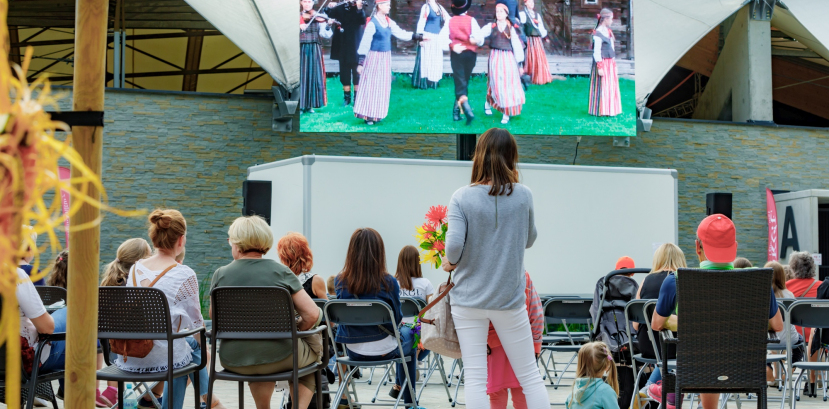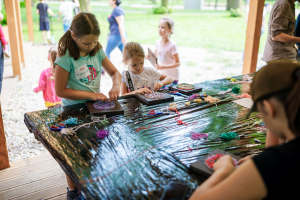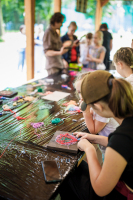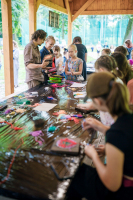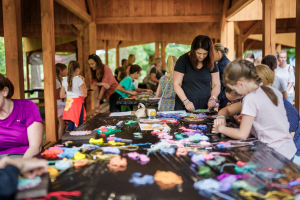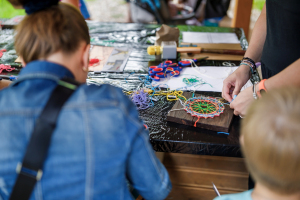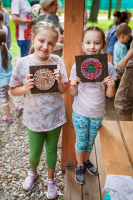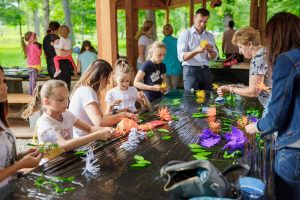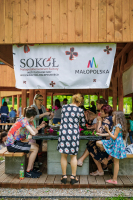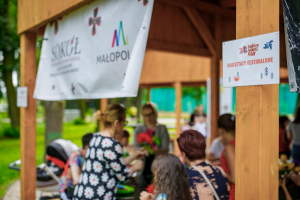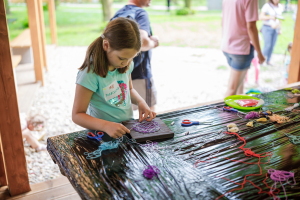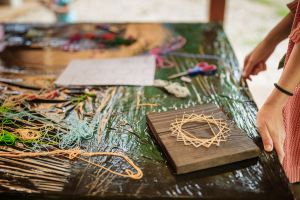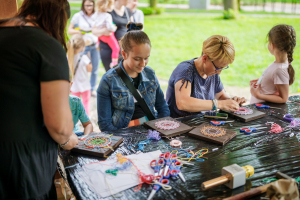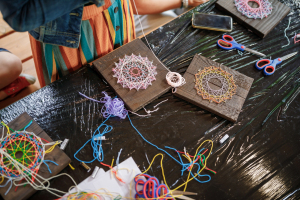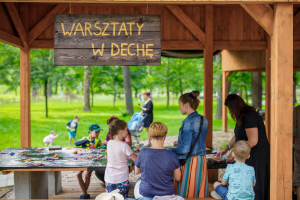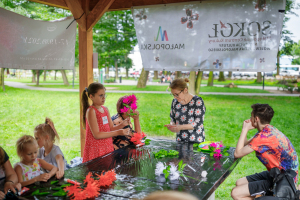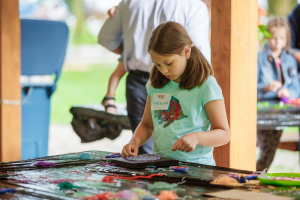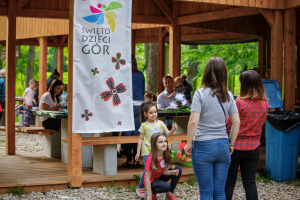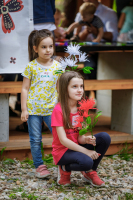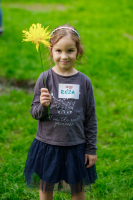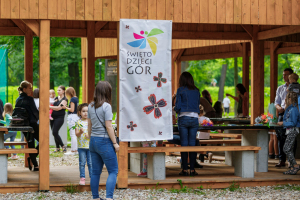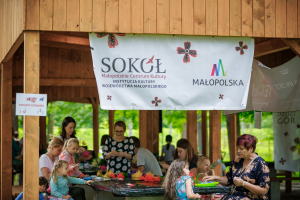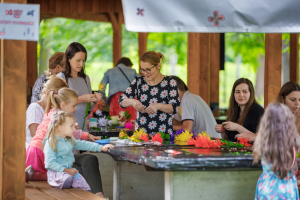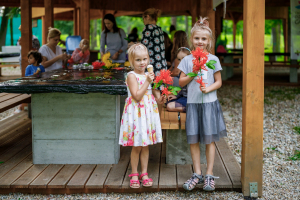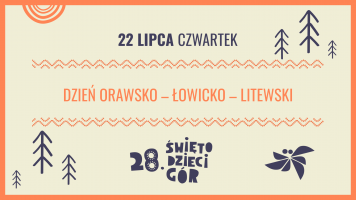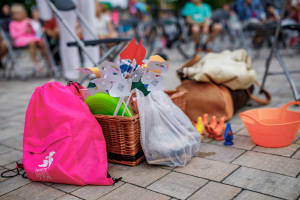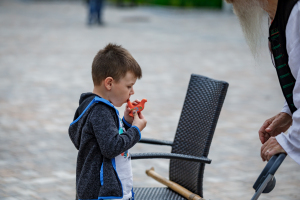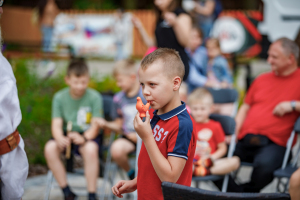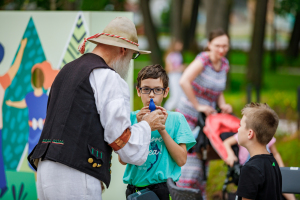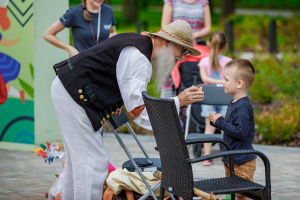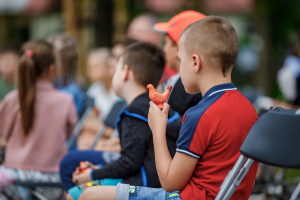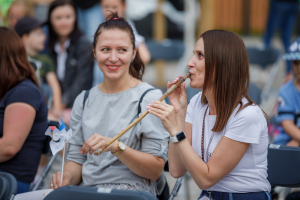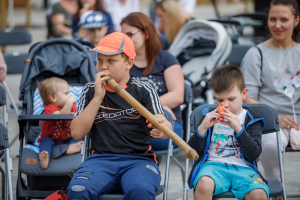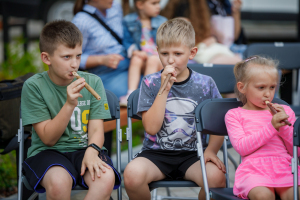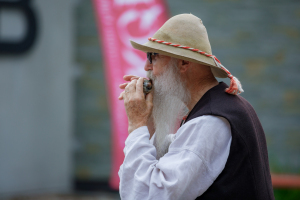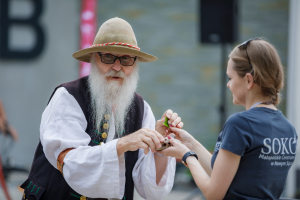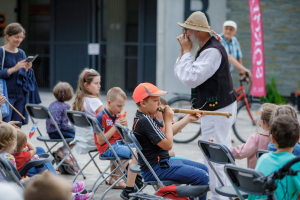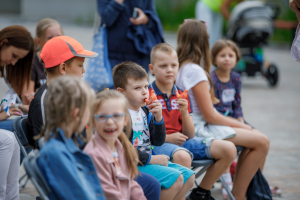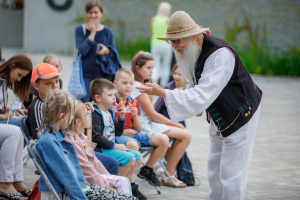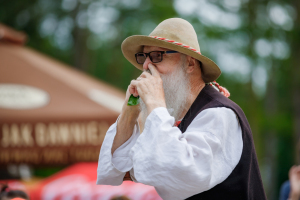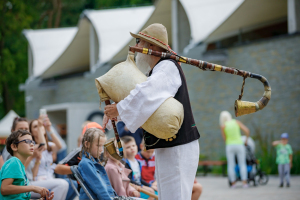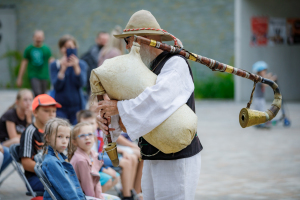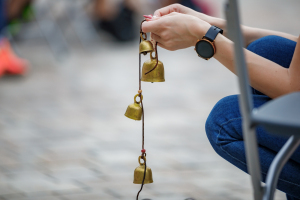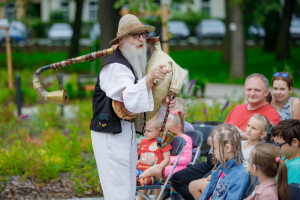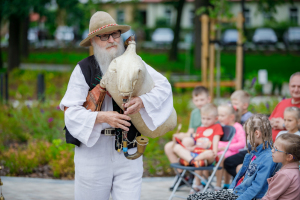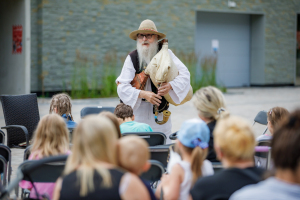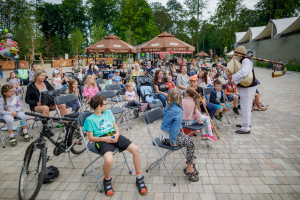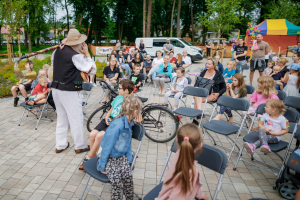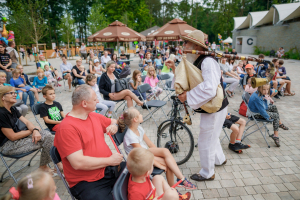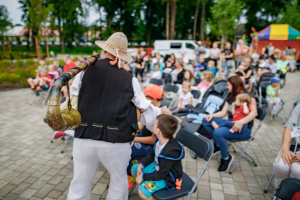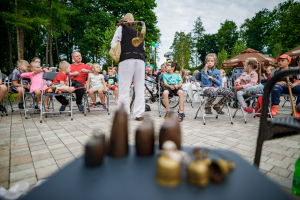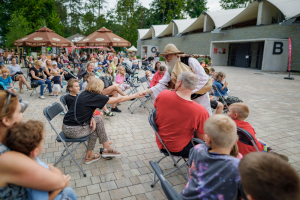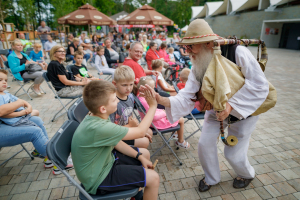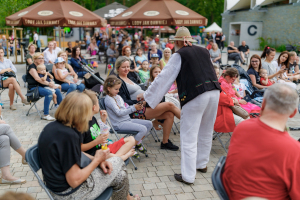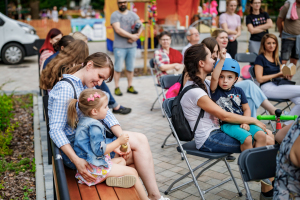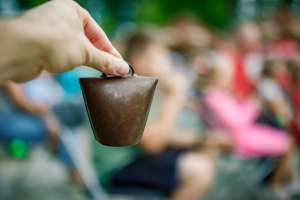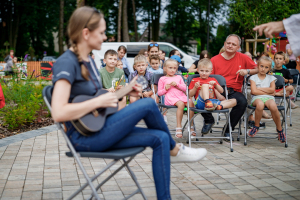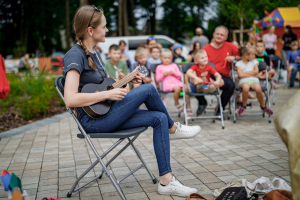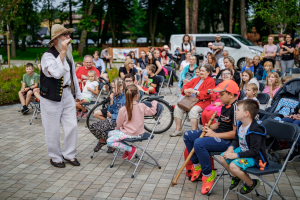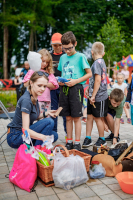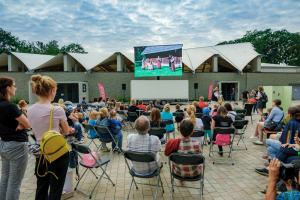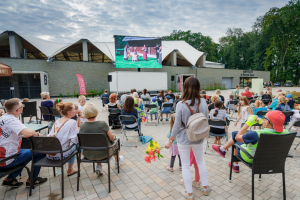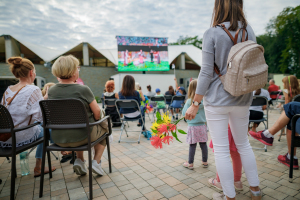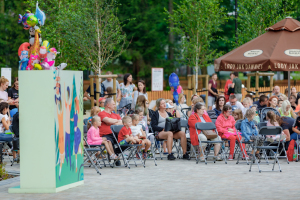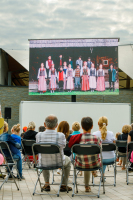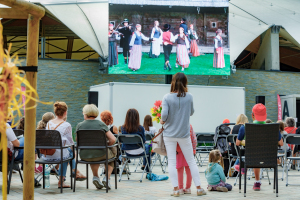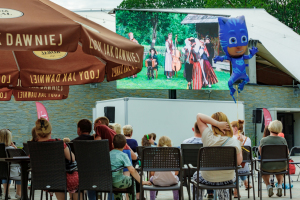During the Thursday workshop two types of material reigned supreme: crêpe paper and embroidery floss. They appear to be different, and yet they are so similar in respect of their plasticity and multi-colouredness.
Under the guidance of, or rather inspired by Teresa Cabała and Elżbieta Drabik, the workshop participants learnt to create crêpe paper flowers the way our grandmothers and great grandmothers used to make them. The flowers were not made to just stand on their own. They were used to make fanciful palms for Palm Sunday, wedding wands and Christmas floral decorations to be suspended from the ceiling. It would be so beautiful if the tradition of making such decorations caught on again.
Tomasz Pilecki and Justyna Sekuła used little planks studded with little nails along with the embroidery floss. So little was needed to create true works of art patterned on folk motifs, and all this took place in the atmosphere of peace and relaxation.
Tomasz Pilecki and Justyna Sekuła used little planks studded with little nails along with the embroidery floss. So little was needed to create true works of art patterned on folk motifs, and all this took place in the atmosphere of peace and relaxation.
Thursday evening. As usual, it all begins with foreign guests.
What is certain to stick in our minds after the performance of ČIUČIURUKS from Telšiai? The musical band, in which every now and then the old traditional instruments changed, and the beautiful polyphonic singing by the little Lithuanians. Indeed! This ensemble is a great time capsule holding the Samogitian tradition of music and song.
Herding was the motif that linked the Polish ensembles. In the programme by MAŁOLIPNICANIE from Orava, the audience had an opportunity to see little geese that were afraid of the evil wolf, and cows that, unattended, went off and caused some damage in the end. The cows were left unattended, because in the space between the beginning and the end, the children from Lipnica Mała laid out for us a magnificent painting woven out of dance, song and play.
KOCIERZEWIACY, who were performing in lavish, festive costumes, invited small oxen, a black ram, a clumsy calf and a stork to come among the cottage houses. And there appeared a whirligig of dance circles and snaking lines, flower-like skirts, in pairs, fours and eights... and songs communicating that they are from the Łowicz district.
What is certain to stick in our minds after the performance of ČIUČIURUKS from Telšiai? The musical band, in which every now and then the old traditional instruments changed, and the beautiful polyphonic singing by the little Lithuanians. Indeed! This ensemble is a great time capsule holding the Samogitian tradition of music and song.
Herding was the motif that linked the Polish ensembles. In the programme by MAŁOLIPNICANIE from Orava, the audience had an opportunity to see little geese that were afraid of the evil wolf, and cows that, unattended, went off and caused some damage in the end. The cows were left unattended, because in the space between the beginning and the end, the children from Lipnica Mała laid out for us a magnificent painting woven out of dance, song and play.
KOCIERZEWIACY, who were performing in lavish, festive costumes, invited small oxen, a black ram, a clumsy calf and a stork to come among the cottage houses. And there appeared a whirligig of dance circles and snaking lines, flower-like skirts, in pairs, fours and eights... and songs communicating that they are from the Łowicz district.

